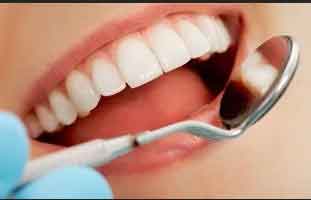- Home
- Editorial
- News
- Practice Guidelines
- Anesthesiology Guidelines
- Cancer Guidelines
- Cardiac Sciences Guidelines
- Critical Care Guidelines
- Dentistry Guidelines
- Dermatology Guidelines
- Diabetes and Endo Guidelines
- Diagnostics Guidelines
- ENT Guidelines
- Featured Practice Guidelines
- Gastroenterology Guidelines
- Geriatrics Guidelines
- Medicine Guidelines
- Nephrology Guidelines
- Neurosciences Guidelines
- Obs and Gynae Guidelines
- Ophthalmology Guidelines
- Orthopaedics Guidelines
- Paediatrics Guidelines
- Psychiatry Guidelines
- Pulmonology Guidelines
- Radiology Guidelines
- Surgery Guidelines
- Urology Guidelines
Tooth cavities can be fought 'naturally'

A new discovery may one day lead to natural anticavity products, researchers report.
The scientists from West China School of Stomatology and Academic Centre for Dentistry Amsterdam have figured out the main active ingredient of Galla Chinensis, a natural herb, and further improved its anti-caries efficacy. The finding is published in The Open Dentistry Journal.
To maintain a healthy mouth, the oral environment must be relatively neutral. When the environment in the mouth becomes more acidic, dental cavities or other disorders may develop. Galla Chinensis was revealed to inhibit the acid production of caries-associated bacteria as well as make teeth more resistant to acidic attack.
The research team of West China School of Stomatology has tested hundreds of Chinese herbs and identified that Galla Chinensis has a strong potential to prevent dental caries due to its antibacterial capacity and tooth mineralization benefit. Galla Chinensis also possesses substantial antiviral, anticancer, hepatoprotective, antidiarrheal and antioxidant activities. However, the main active ingredient of Galla Chinensis is unknown, which restricts the application in dentistry.
In the present study, several Galla Chinensis extracts with different main ingredients were obtained and determined by liquid chromatography-mass spectrometry (LC-MS) analysis. The antibacterial capacity was determined using the polymicrobial biofilms model, which can generate reproducible plaque-like biofilms that occur in vivo. The effect of inhibiting tooth demineralization was tested using an in vitro pH-cycling regime, which mimicked the periodic pH change in the mouth.
"Medium molecular weight gallotannins are the most active constituent in terms of caries prevention" concluded Xuelian Huang, PhD, DDS, the lead author.
In dental caries, significant reductions in caries prevalence and incidence have been made by the introduction of fluoride. It is not a total cure, however, and there is still a need to seek products complementary to fluoride. With these new findings, the research team is working with the industry to develop new oral care products.
For more details click on the link: http://dx.doi.org/10.2174/1874210601711010447

Disclaimer: This site is primarily intended for healthcare professionals. Any content/information on this website does not replace the advice of medical and/or health professionals and should not be construed as medical/diagnostic advice/endorsement or prescription. Use of this site is subject to our terms of use, privacy policy, advertisement policy. © 2020 Minerva Medical Treatment Pvt Ltd